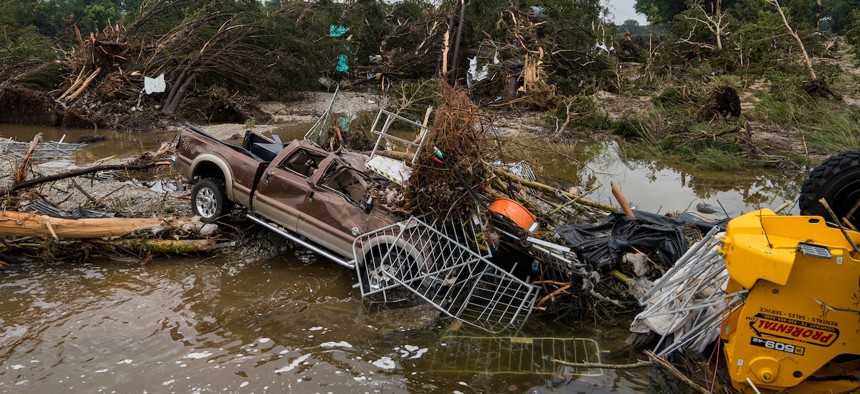Concerns Raised Over Government Cuts and Texas Flooding Response
In light of the tragic flooding that recently hit Texas, several Democratic lawmakers have pointed fingers at budget cuts made during the Trump administration, particularly concerning the workforce of the National Weather Service (NWS). Senator Chris Murphy expressed concern, stating, “Accurate weather forecasting helps avoid fatal disasters.” The implication here is that these cuts may have hampered the NWS’s capacity to predict and warn the public effectively about the impending floods.
However, White House Press Secretary Karoline Leavitt responded on Monday, asserting, “These offices [of the NWS] were well staffed… so any claims to the contrary are completely false.” An investigation by BBC Verify has revealed that while there was a reduction in NWS personnel, the staffing levels during the floods appeared sufficient, according to various experts.
What Cuts Were Made?
The Trump administration proposed a significant reduction of 25% to the National Oceanic and Atmospheric Administration’s (NOAA) annual budget, which currently sits at approximately $6.1 billion. NOAA oversees the NWS, but these specific budget cuts are set to take effect in the 2026 fiscal year, meaning they would not have influenced the recent flooding events directly.
Nonetheless, staffing levels at the NWS have already faced challenges due to an efficiency drive initiated by the Trump administration. The Department of Government Efficiency (Doge), previously managed by Elon Musk, offered federal workers voluntary buyouts and early retirement options. Consequently, around 200 NWS employees chose to take voluntary redundancy, while another 300 opted for early retirement. This led to a total loss of approximately 600 employees from a workforce that was around 4,200, resulting in several offices struggling with inadequate staffing levels.
Notably, in a report from April, it was highlighted that around 50% of NWS offices were experiencing a vacancy rate of 20%, double that from a decade ago. Despite these figures, climate specialists have indicated that the forecasts and flood warnings issued in Texas during the crisis were as reliable as could be expected. “The challenge with this event was that it is very difficult to forecast this type of extreme, localized rainfall,” shared Avantika Gori, a civil and environmental engineering assistant professor at Rice University.
Challenges at Local Offices
Nonetheless, some experts have pointed out potential complications in communication between local NWS offices in Texas and emergency management services due to staffing cuts. Daniel Swain, a climate scientist at UCLA, noted, “There is a real question as to whether the communication of weather information occurred in a way that was sub-optimal.” This suggests that the flooding could potentially have been mitigated had more personnel been available to coordinate vital communications. Reports indicate that the San Angelo and San Antonio NWS offices, covering the affected regions, had several vacancies.
| NWS Office | Vacancies | Staffing Concerns |
|---|---|---|
| San Angelo | 1 senior hydrologist | Missing key positions |
| San Antonio | 2 meteorologists | Lacked warning coordinating meteorologist |
Despite these fallbacks, the NWS reported that they had increased staffing levels in anticipation of severe weather events and that forecasts and warnings were issued promptly. Erica Grow Cei, a spokesperson for the NWS, declared, “All forecasts and warnings were issued in a timely manner.”
When questioned about potential recruitment shortfalls during a press interaction, former President Trump dismissed the idea: “No, they didn’t.” Nonetheless, a separate commentary by meteorologist John Morales highlighted a 20% reduction in weather balloon launches, essential for gathering atmospheric data. Although the NWS has confirmed some reductions in launches at several locations due to insufficient staffing, data from the Del Rio launch station, which is closest to the impacted area, shows weather balloon launches continued as scheduled.


